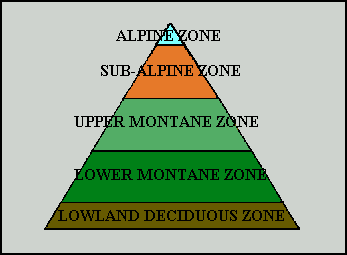

MORE ON THE WOODLANDS OF RETEZAT
| Romania still holds a high proportion of Europe's total remaining deciduous forest cover (see Chart 3) and a very high proportion of the remaining natural and semi-natural Beech Forests. (see Chart1) |
|---|

Montane Forests
The Forests of the lower part of this Zone are dominated by Beech (Fagus sylvatica) which in South West Romania is sometimes represented by the Balkan sub-species F. sylvatica ssp. moesica.
Higher up are the Spruce dominated Forests of the Upper Montane Zone.
| Map 5 shows the distribution of the Spruce and Beech dominated forests of the Upper and Lower Montane Zones in Romania. |
|---|

Lowland Forests
In Romania the deciduous forests of the lower regions and on South facing slopes are generally dominated by Oak species such as:
|
The Woodlands of South West Romania
Many tree species are found in these characteristically diverse mixed natural forests including woods of Turkish hazel (Corylus colurna) and lilac (Syringa vulgaris), some wooded valleys contain the Transylvanian lilac (S. josikaea) which is most closely related to S. emodi, found only in Afghanistan and in the Himalayas.
In some Southern areas on South facing slopes various sub-Mediterranean plants and shrubs, such as the Manna or Flowering ash (Fraxinus ornus), whose leaves have been used as animal fodder, and the Wig tree (Cotinus coggygria) are found.
| Map 6 shows the range of woodland types found in South West Romania |
|---|
Other Tree Species Present (Burford)
|

